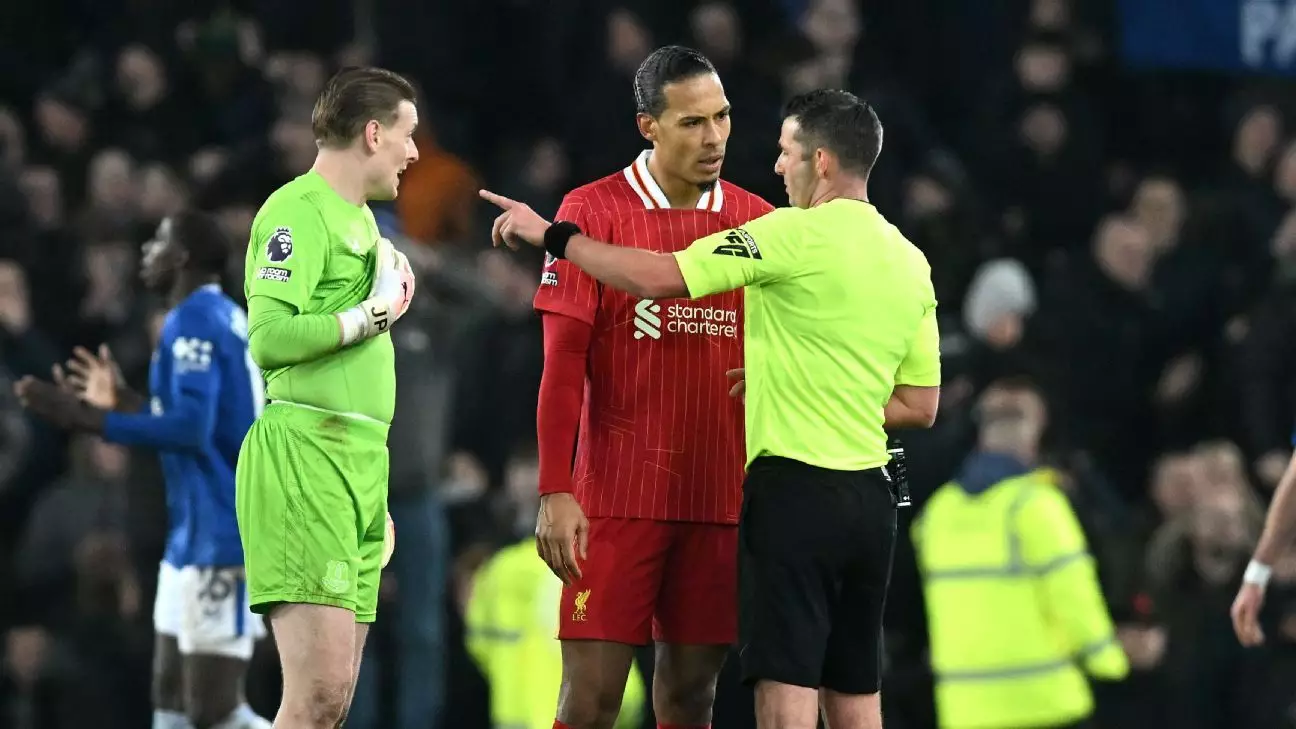The Merseyside derby between Liverpool and Everton on Wednesday took a tumultuous turn, culminating in a fervent 2-2 draw that left fans and players alike in disbelief. The match was marked not just by its scoreline, but by the chaotic events that unfolded during and after the final whistle. With the stakes high in one of English football’s most storied rivalries, the intensity was palpable, but the aftermath overshadowed the on-field performance.
Liverpool’s captain, Virgil van Dijk, was vocal in his criticism of referee Michael Oliver, stating that he „lost control“ of the match. This sentiment resonated with many spectators who witnessed the dramatic culmination of the game. The highlight, or in this case, lowlight, was undoubtedly the four red cards issued—two during the match and two after the final whistle. The source of the chaos stemmed from an altercation involving Everton’s Abdoulaye Doucouré, who seemed to provoke Liverpool supporters after a stunning goal from James Tarkowski. Such actions inevitably sparked tensions, leading to confrontations that culminated in the sending off of players and coaches alike.
The emotions in the stadium intensified following Tarkowski’s late equalizer. With fans filled with elation and others stirred into frustration, the scene devolved into a melee after the final whistle. The involvement of Curtis Jones escalated an already volatile situation, confronting Doucouré amidst the fervor of the crowd. Critics of Oliver’s officiating might argue that he failed to maintain control not only during the game but also as tensions spilled over post-match, creating a scenario that could have potentially been avoided with better management.
Moreover, the reactions from both teams reflected a culmination of pent-up frustrations. Everton manager David Moyes acknowledged the charged atmosphere, even suggesting that the tumult was an apt conclusion to what he referred to as the „final derby at Goodison Park.“ His perspective highlighted the intricate emotional landscape of the game, while he sidestepped commentary on the brawl that marred the event.
This derby serves as an essential reminder of the passion that football evokes, particularly in fiercely contested rivalries. However, the line between passion and disorder can often blur, as seen during this match. Van Dijk’s comments regarding accountability for both teams resonate beyond the pitch, emphasizing a need for emotional management amid intense competition. As the dust settles on this drama-filled encounter, both clubs are tasked with reflecting not only on the scoreline but also on the conduct that unfolded.
The Merseyside derby left a lasting imprint, not solely due to the thrilling goals and crucial plays, but more so because of the tumultuous aftermath that will linger in the memories of fans and players. Moving forward, it remains vital for teams and officials to work towards not just cultivating competitive spirit, but also fostering an environment where the sport itself can thrive without chaos overshadowing the beautiful game.


Napsat komentář